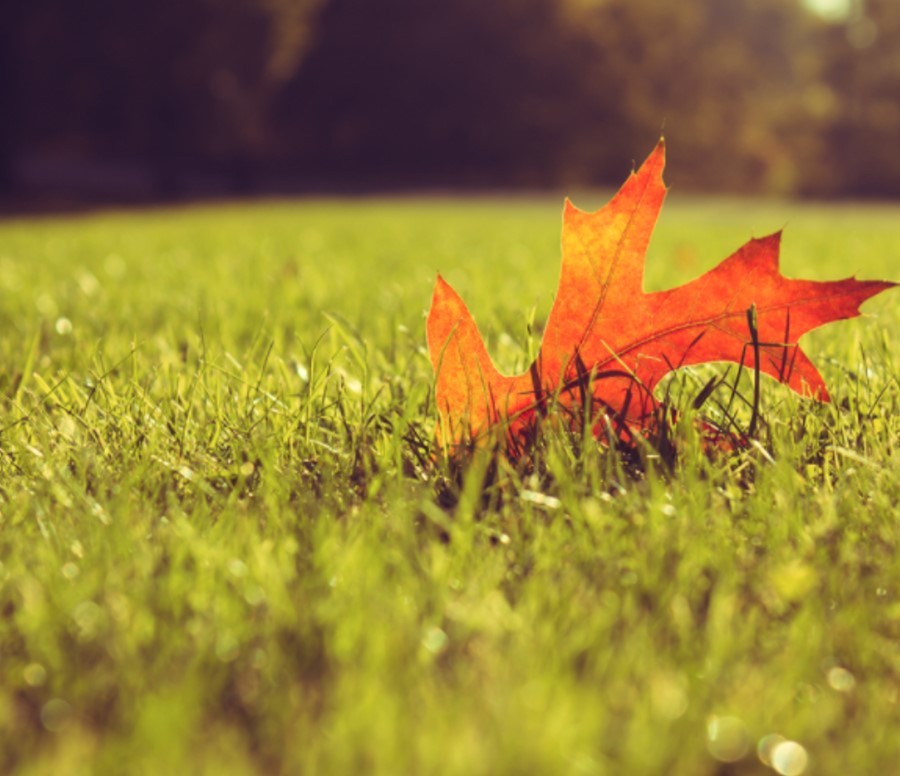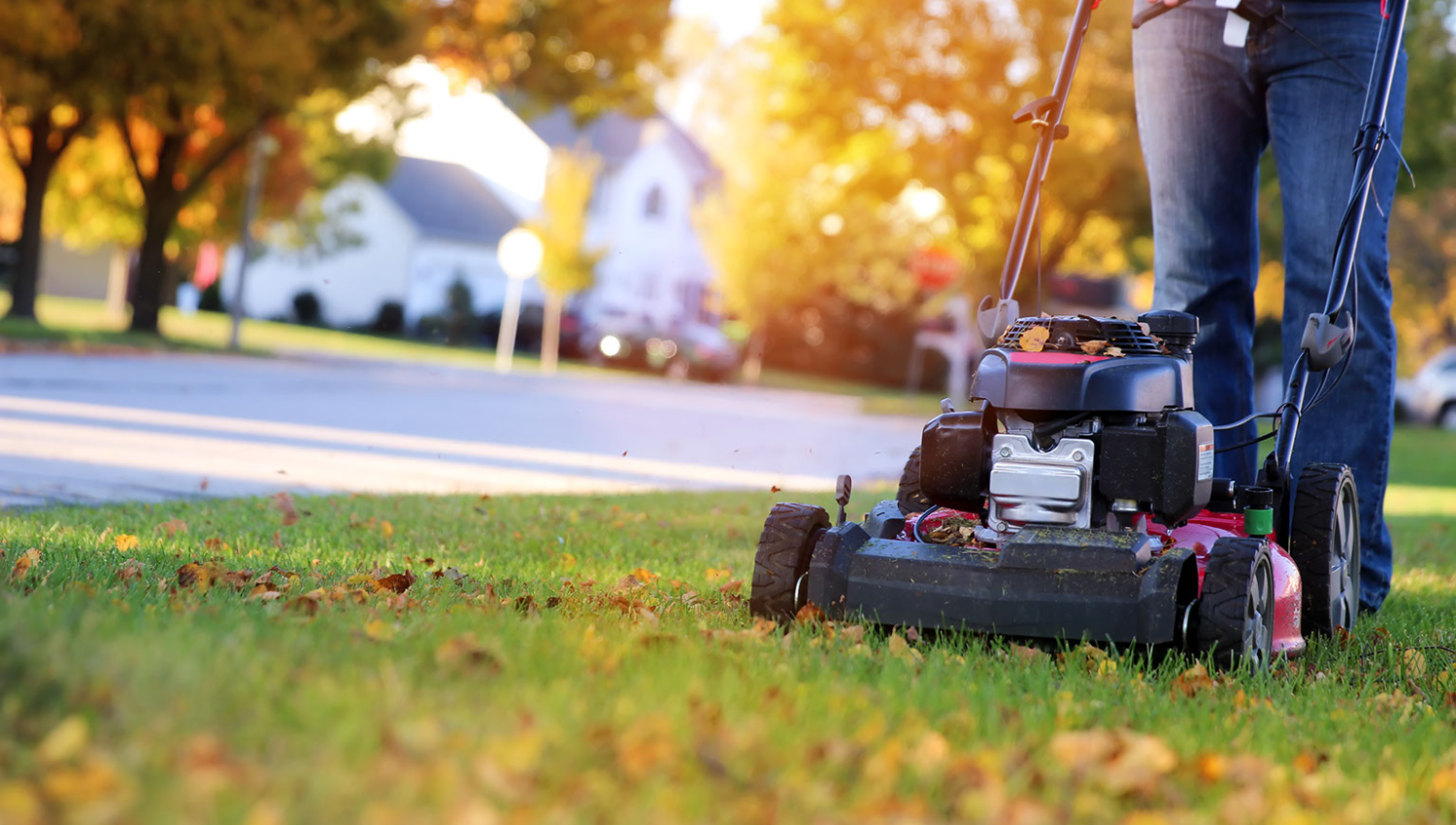Fall Lawn Care Mistakes to Avoid
Reading time: 7 minutesKnowing how to avoid fall lawn care mistakes is vital to keeping your lawn lush and green as long as possible before winter sets in. Autumn is a crucial time for your property, and making mistakes now can lead to more significant problems once spring returns.
But you don't have to stress. We're giving you the rundown on what to avoid while setting your lawn up for success while you overwinter it. Plus, we're breaking down the importance of fall maintenance and how Green Drop helps cultivate a beautiful yard you love.
Why Lawns Need Specialized Care in the Fall
You may not know this, but lawns need different care in the fall than in the spring and summer seasons. As the temperatures cool, especially at night, your lawn switches from foliage to root growth. This means its nutrient and water needs have changed to prepare for winter.
Pests are often more active in the fall because they feed on your lawn's roots and grass blades, often resulting in loose turf and yellowing. Eliminating and preventing infestations is critical before winter when bugs burrow deep beneath the ground. Once they dig down below the surface, they're harder to reach with pesticides and other removal methods.
Autumn maintenance is also necessary to help protect your lawn against cold stress brought on by blankets of snow and ice. It prevents weeds from proliferating underground and taking over in the spring when everything finally melts as your lawn basks in the sun.

Common Fall Lawn Care Mistakes You Don't Want to Make
Lawn care is as much of an art as it is a science. Striking a balance between the right amount of water, fertilizer, and mowing can be complicated, especially if you're a new homeowner or have never taken care of a lawn.
This fall, avoid these top lawn care mistakes for a longer-lasting, more beautiful lawn:
Watering Incorrectly
How much water your lawn should get changes in the fall. If you keep watering the same amount you did in the summer when it was much hotter, you risk overwatering your lawn and causing problems like root rot. But if you don't water your lawn enough, it likely won't have the root depth it needs to survive the winter.
Health Canada has some great tips on how to water your lawn. They recommend watering infrequently but deeply to encourage root growth, usually around once a week when precipitation has been low.
If it's been raining, you can skip that week's watering until the grass has dried out again. Using an empty tuna can is the easiest way to measure your watering depth. Place the can on your lawn and water as normal – each time you fill the can, that's about 1 inch of water. Make sure you're not watering more than 1 to 1.5 inches per week.
Do Not Dethatch Dead Grass with Power Raking
Autumn is an excellent time to get rid of thatch. This is a layer of dead grass clippings and weeds that sit underneath the green grass layer and can block light, air, and water from getting to the roots of your lawn. It also creates a cozy place for pests, so you want to keep it from building up or getting too thick.
While it's tempting to dethatch with power tools and rakes, this should be avoided because of the long-term damage it can cause to your lawn. Instead, we recommend aeration and overseeding as a form of prevention. Aeration is a great option, as it creates more space in the soil and encourages faster decomposition of the existing thatch layer.
Not Mowing Long Enough
Many people stop mowing early in the fall, right as the weather starts to turn chilly. But this is too early to stop trimming your grass because it's still growing.
Putting up the mower before it's time leaves your lawn open to uneven growth in the winter. Now, it's prone to matting, which may block nutrient and water absorption more than shortly clipped grass. Long, unkempt grass also invites pests and fungal diseases that can spread more easily among thick, wet foliage in the fall.
Don't make this simple mistake. You should mow well into the late fall, just before the first frost hits. This signals your grass to stop growing so it stays nice and short all winter and is less prone to problems like snow mould.

Scalping Your Lawn
Scalping is a controversial practice that involves cutting your grass down to nearly the crowns, which gives your lawn a dry, dead appearance. This is because scalping removes almost all of the green portion of your grass and exposes the crowns, which are just above the layer of thatch.
While you want to keep mowing your lawn through autumn, you don't want to clip it so short that the grass is nearly gone. Doing so allows snow and ice to get too close to your lawn's root system, which could kill your grass.
Going into winter, it shouldn't be long or uneven, but you don't want it to be bare. A couple of inches of grass creates the perfect thermal layer between the cold and your lawn's roots, which is essential for its survival.
Not Fertilizing Your Lawn
Like mowing, many homeowners also stop fertilizing their lawns too early. This can cause troublesome issues that are difficult to resolve in the winter and tend to get out of control by the time spring rolls around.
Since your lawn is slowing down foliage growth and bumping up root production, fall is a perfect time to fertilize your grass. This gives it a boost of nutrients just before winter, when your lawn will go for long periods without maintenance. A fall fertilizer blend focuses on the roots, helping develop a robust and healthy root system.
Think about it like you think about bears hibernating during the colder months. First, they "fatten up," ensuring they have plenty of the nutrients and carbohydrates their bodies need for extended sleep. Your lawn works this way, too, and fertilization in the fall helps it absorb more fuel for the season ahead.
Lack of Weed Control
Pulling weeds isn't just a summer activity – it's crucial in the fall, too. Your lawn is still doing important tasks to prepare for the winter until the first frost. Letting weeds grow or not treating them before the cold season means your grass has to compete with them for nutrients and water.
Make sure you continue to pull weeds through autumn and up until there's snow on the ground. That way, when your lawn "wakes up" in the spring, there aren't weeds already embedded in the root system ready to take over.
Ignoring Bare and Brown Spots
You might think you can let brown or bare spots winter with the rest of your lawn, but this can worsen issues come spring. Diseases like dollar spot, powdery mildew, pythium, and rust can cause these spots. If left untreated, they could spread to other lawn areas and put all your grass at risk.
How to address discoloration or patchiness in your lawn depends on the cause. It's often hard to diagnose diseases like the above on your own, but a qualified lawn professional can help. They can assess your lawn and even take samples to determine the type of disease and the most effective treatments.
Green Drop: Your Fall Lawn Maintenance Partner
Fall lawn care mistakes are easy to avoid but can have devastating consequences if you don't. At Green Drop, we know exactly what it takes to cultivate a healthy, vibrant lawn no matter the season.
Our team of GreenKeepers can help you develop a fall maintenance strategy designed to protect your grass over the winter and prepare your lawn for a quick return in the spring. Contact us today for more information.

